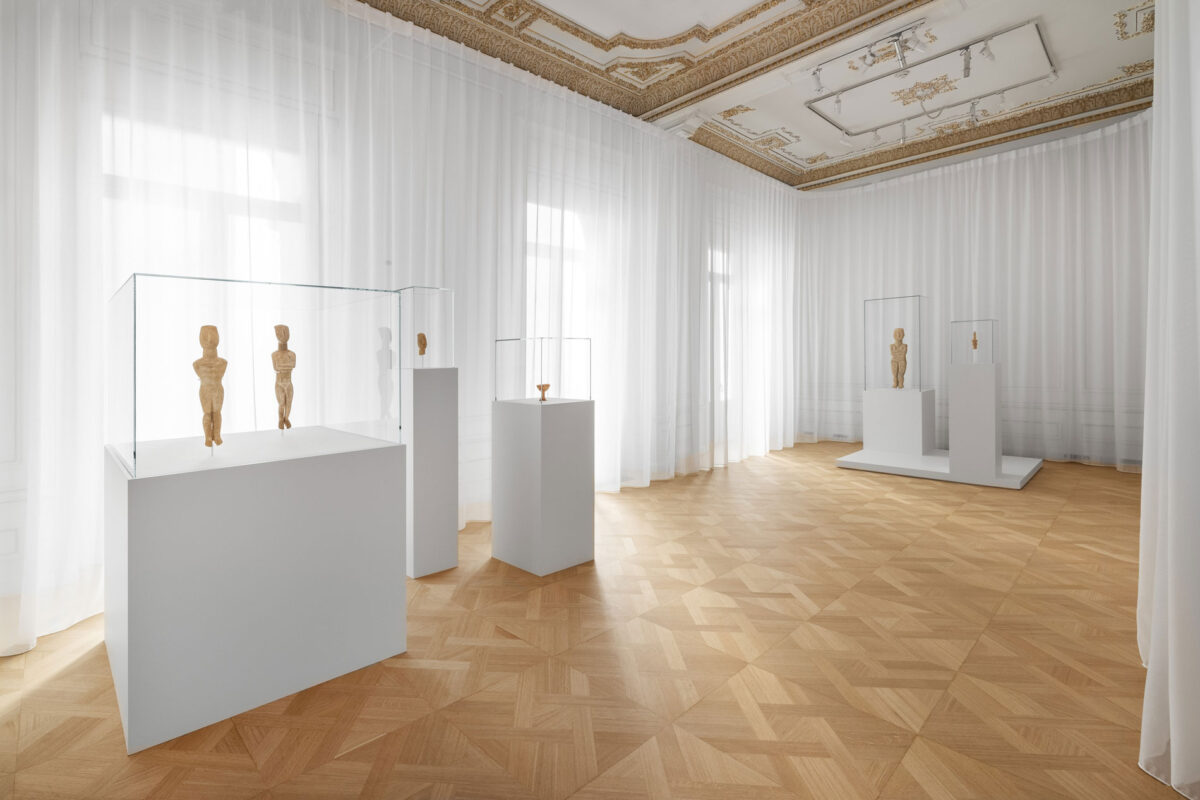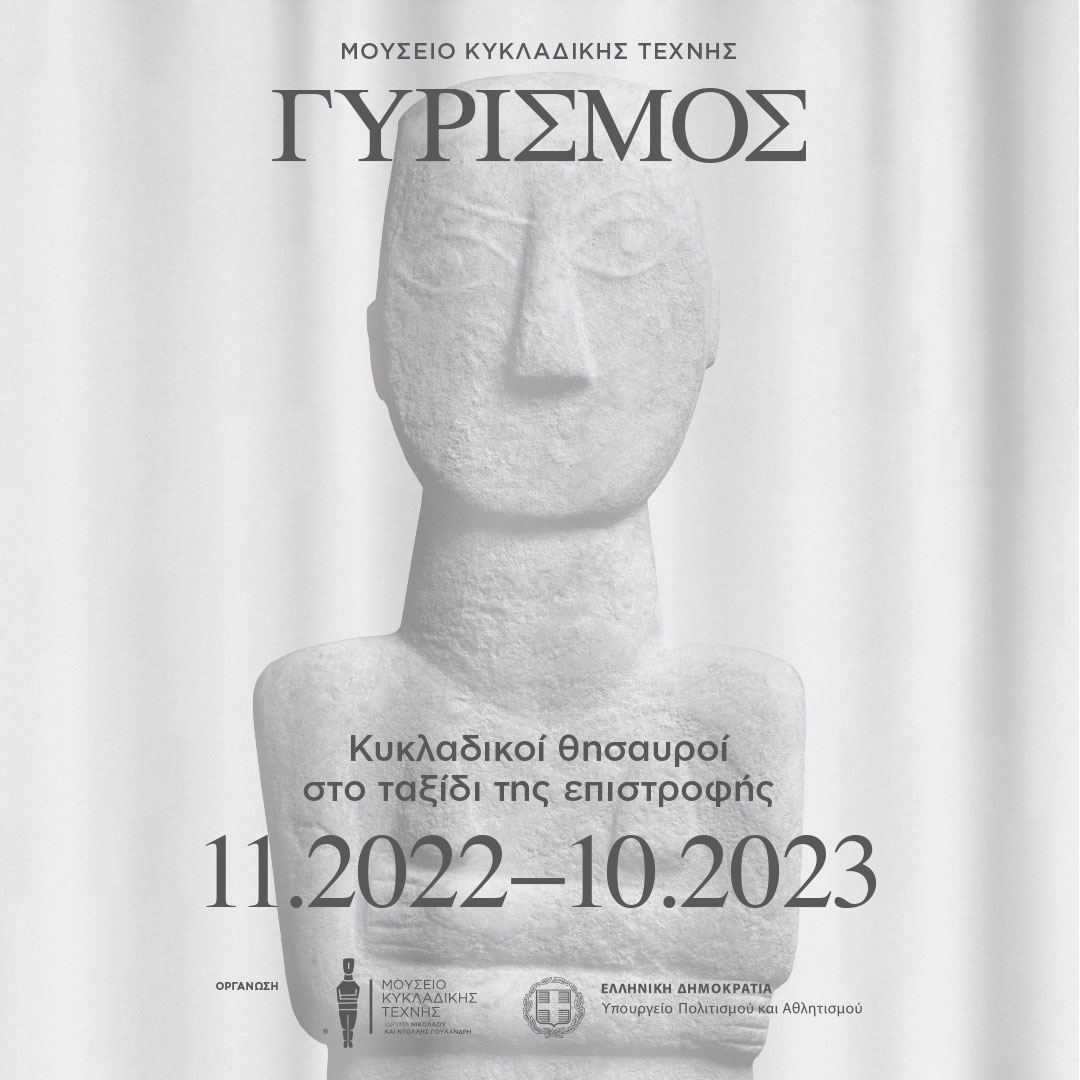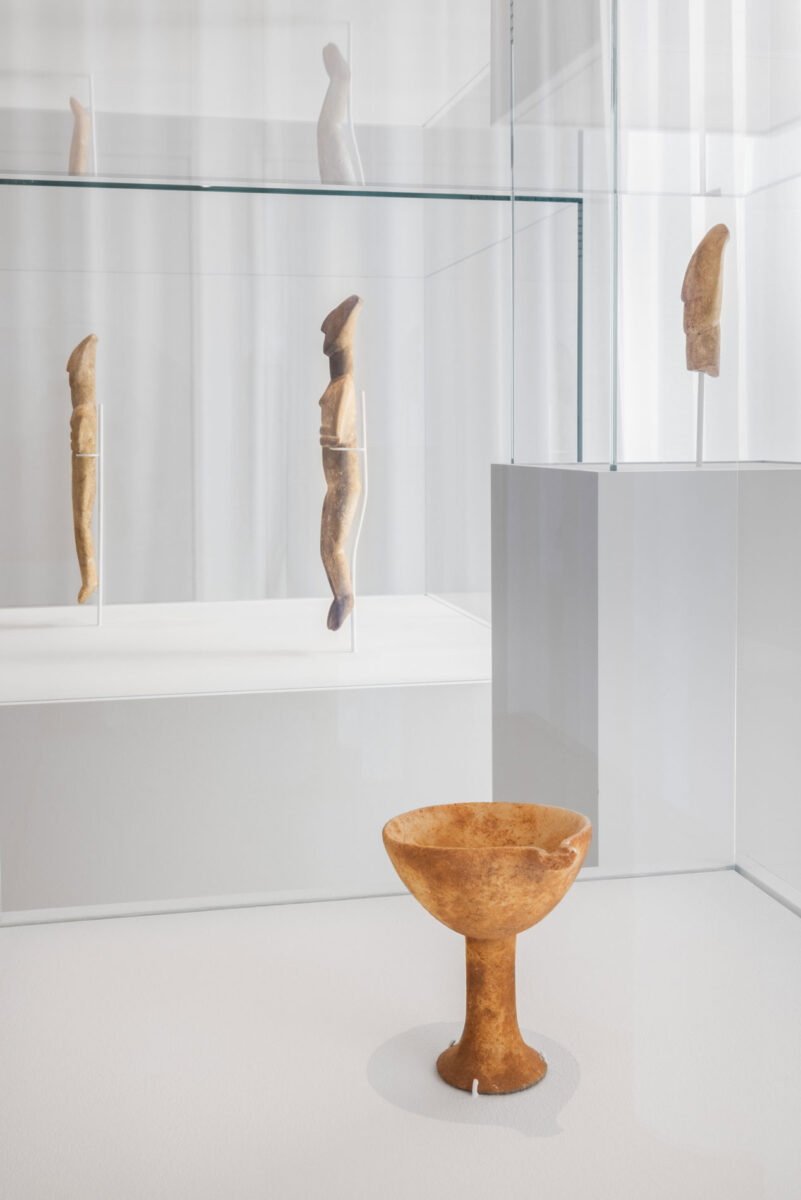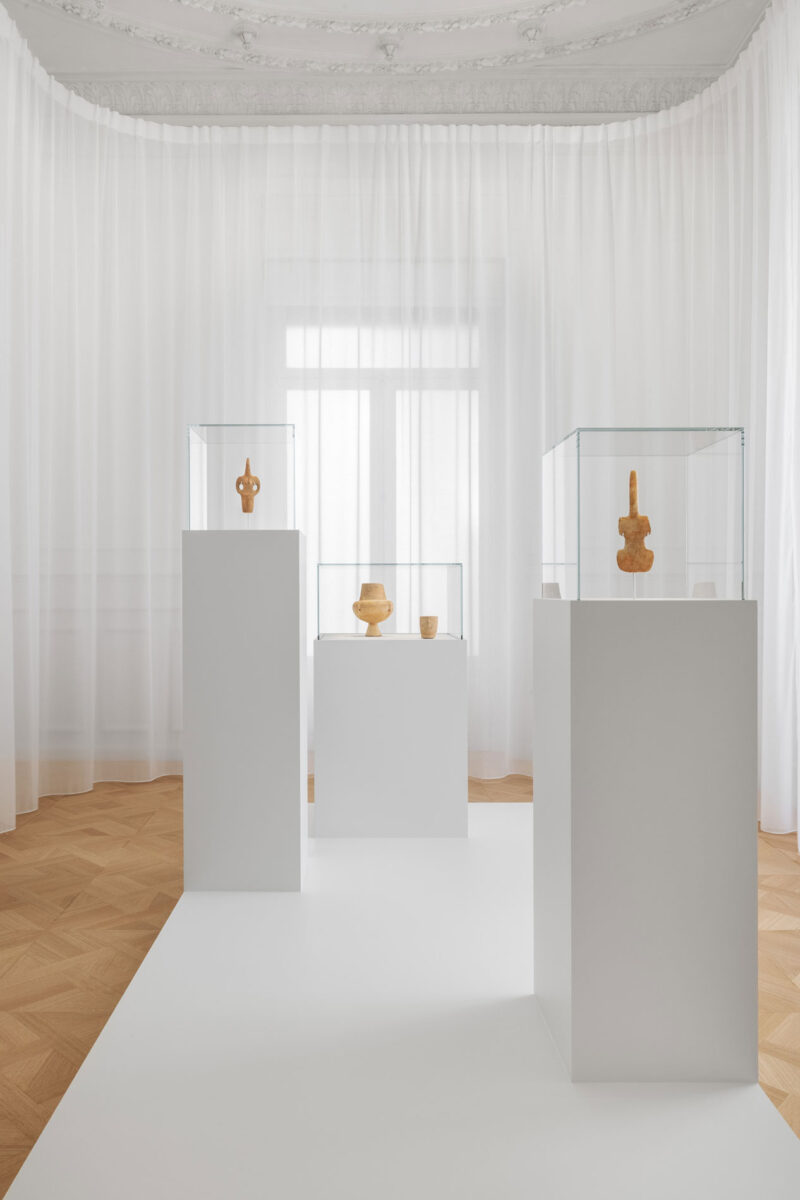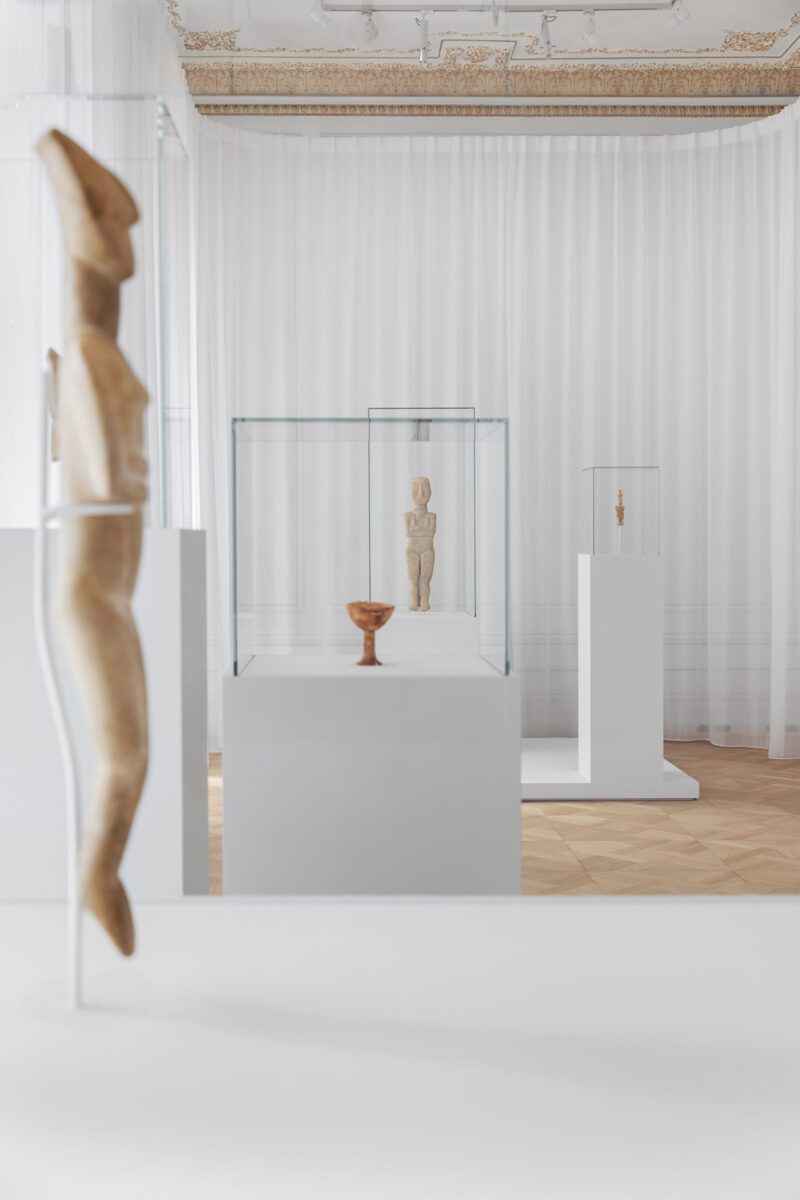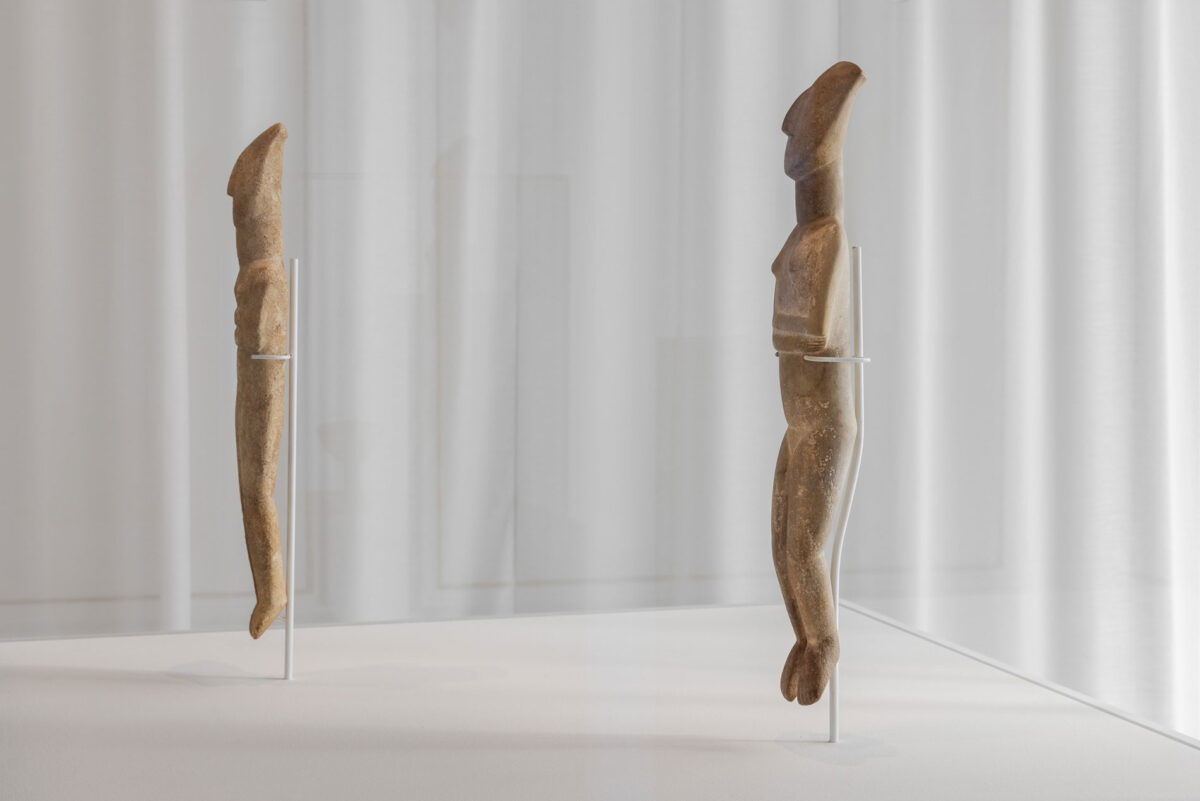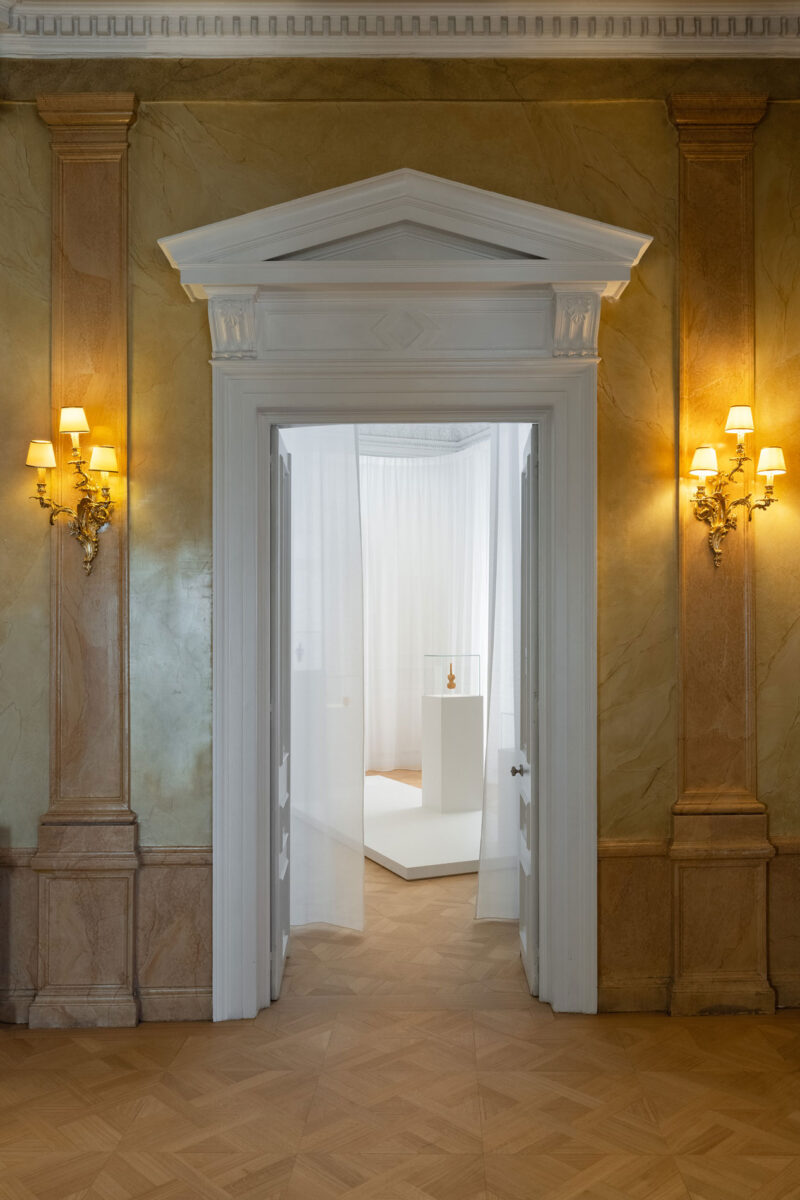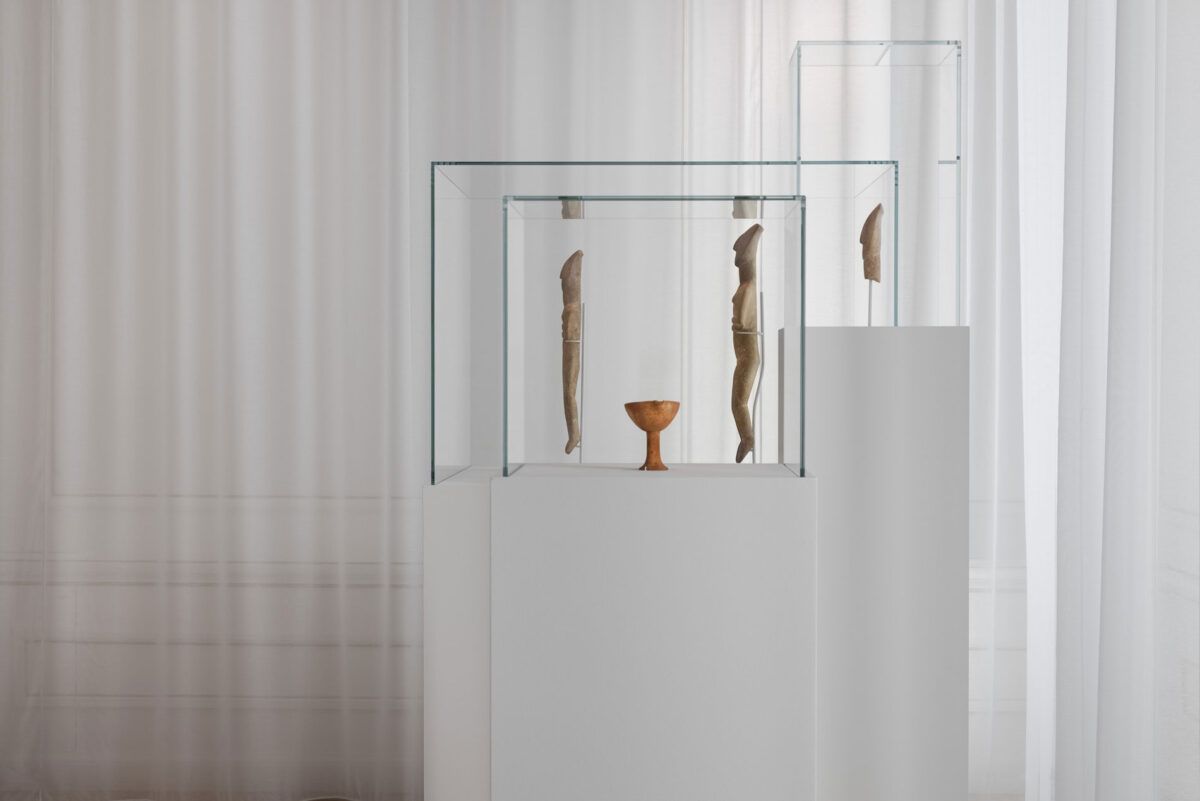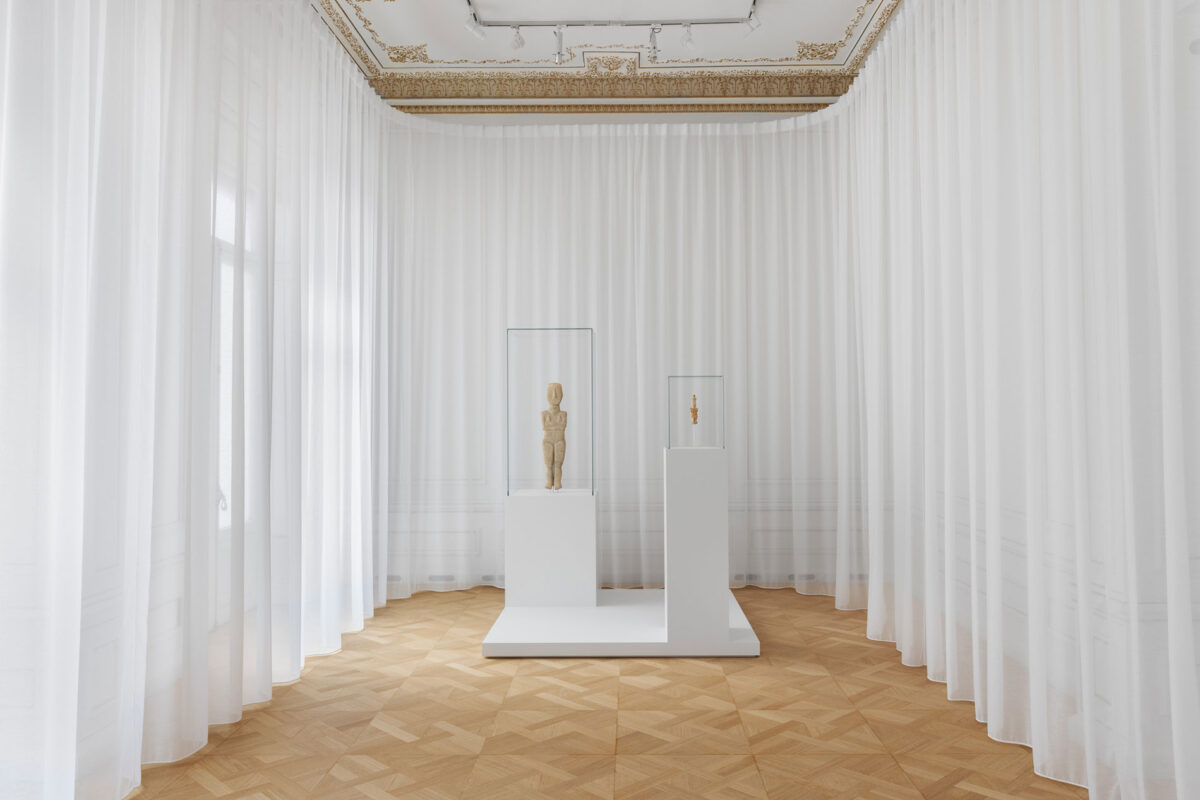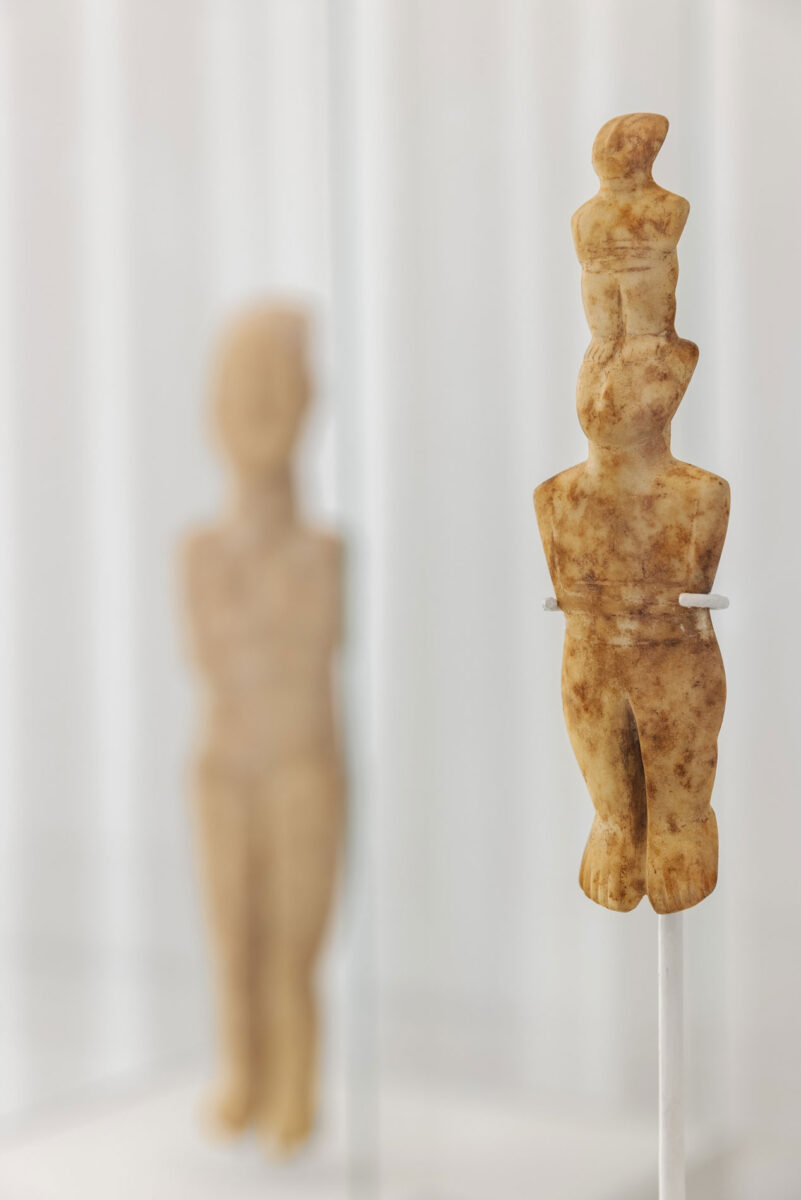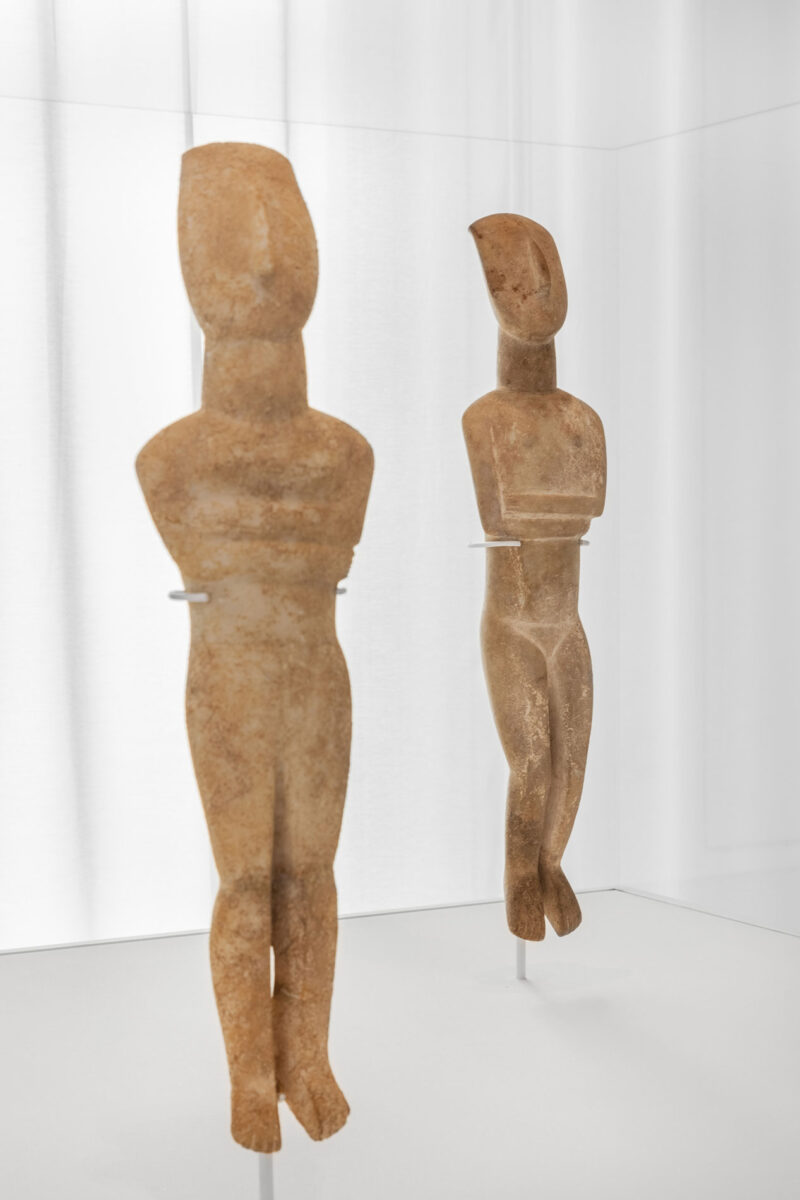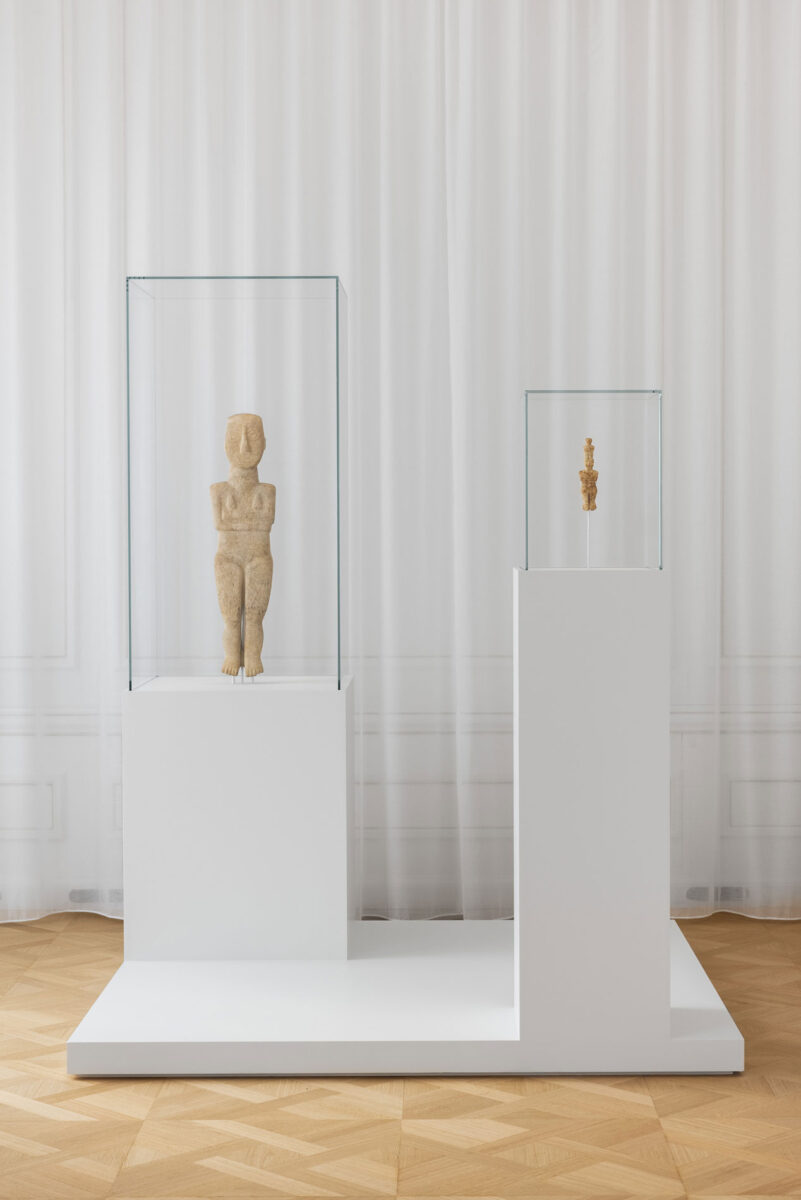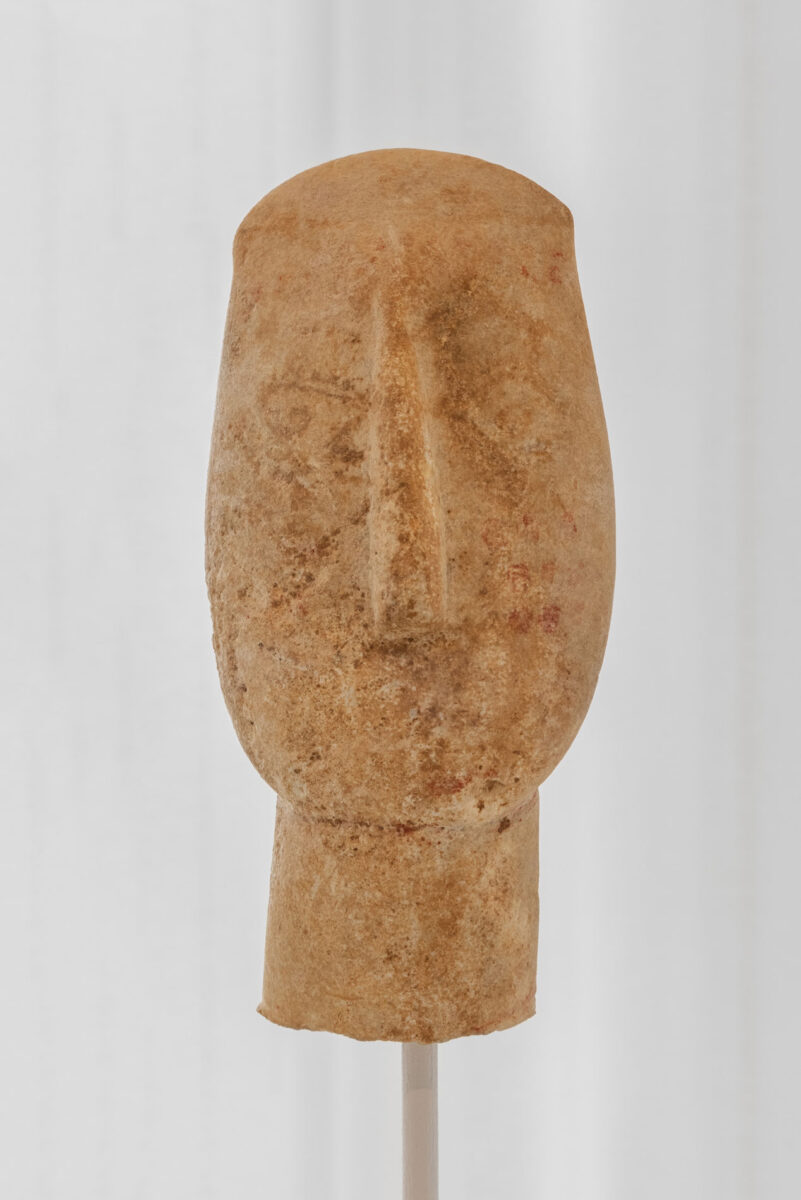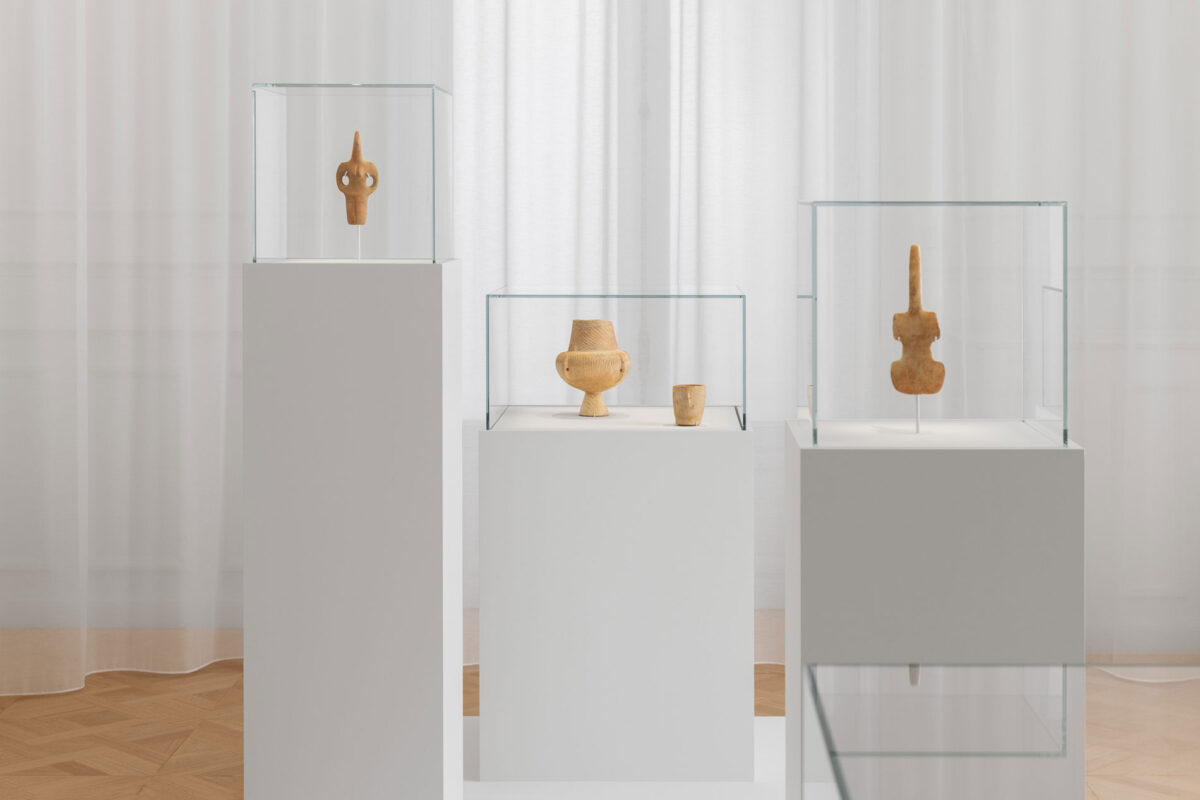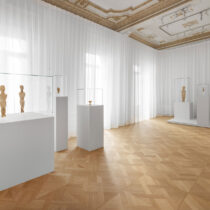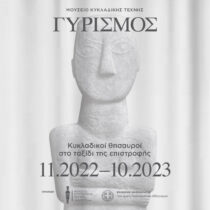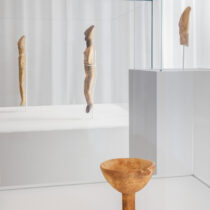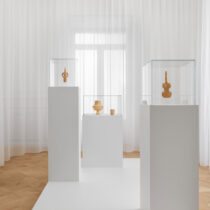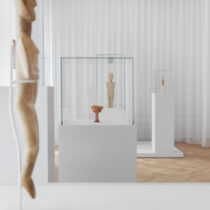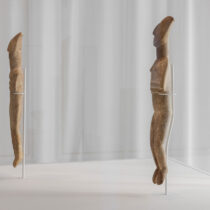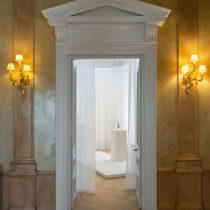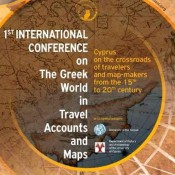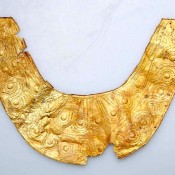The exhibition “Homecoming. Cycladic treasures on their return journey” is being presented by the Museum of Cycladic Art in collaboration with the Ministry of Culture and Sports. It is the first step in implementing the historic agreement between the Ministry, the Museum of Cycladic Art and the Metropolitan Museum of Art of New York (MET) ratified by the Greek Parliament on September 9, 2022. The agreement provides for the gradual return to Greece of 161 Proto-Cycladic antiquities of unique archaeological value owned by American collector Leonard Stern. 15 of these antiquities are being displayed for the first time globally, at the Museum of Cycladic Art, Athens. This will be followed by an exhibition of the entire collection at the MET, before its final return to our country.
The exhibition will run from November 3, 2022 to October 31, 2023 and includes these 15 first antiquities. The exhibition presents rare exhibits that add new data to our knowledge of Proto-Cycladic art. Among them are also types that could be considered unique, either as a whole or in their individual morphological characteristics, as they are not to be found among the works known so far of the Proto-Cycladic period.
Specifically, ten marble figurines and five vases made of marble, steatite and clay are included, covering a broad chronological spectrum, from Late Neolithic times to those of the Proto-Cycladic II period (c. 5300–2400/2300 BC). The figurines exclusively depict the female figure belonging to types and variations that correspond to the stylistic orders of each period (schematic, pre-canonical, canonical), while the vases represent some of the most characteristic types of utensils of the entire Proto-Cycladic period.
As the President and Managing Director of the Museum of Cycladic Art Cassandra Marinopoulou stated: “An exceptional and largely unknown collection of Cycladic antiquities owned by the American collector Leonard N. Stern, with rare and unique works, is gradually making its way back home. It’s a historic moment for our country, for the Museum of Cycladic Art but also for me personally, as we are participating in an unprecedented collaboration with the Greek State and the Metropolitan Museum of Art of New York, thus contributing to the return of the 161 Cycladic masterpieces and paving the way for the return of other antiquities in the future. The dissemination and promotion of Cycladic and Ancient Greek Culture internationally has always been the aim of the Museum of Cycladic Art. I feel very proud because this goal is now being fully accomplished, both with the present exhibition of the first 15 antiquities at the Museum of Cycladic Art, and with those to follow in Greece and the USA. The achievement of this goal also includes the start of a further cooperation with the Greek Ministry of Culture and Sports and the MET, through which it will be possible to study the Cycladic culture and build scientific collaborations at various levels of research”.
“The mission of the Metropolitan Museum of Art in New York is to enable the public to enjoy and study art”, said Director of the Metropolitan Museum of Art, New York Max Hollein. “We are very excited about this historic collaboration with Greece, which brings an important collection of Cycladic antiquities permanently and for the first time into the public sphere. This agreement is based on the long and fruitful collaboration between the Greek government and the Metropolitan Museum of New York. We are happy to be playing a part in an agreement to benefit visitors and scholars of future generations. We are deeply grateful to Leonard N. Stern, who is actively supporting the Metropolitan Museum of Art in the study of these masterpieces and related archival material, which will enable us to record the collection in depth and publish it. In addition, we are delighted that the entire collection of 161 antiquities is to be exhibited at the museum in 2024, as part of a long-term loan. The Metropolitan Museum warmly thanks Greece and the Museum of Cycladic Art for their close cooperation. We look forward to continuing our discussions regarding our future scientific collaboration. We all benefit from the public display of art”.
About the exhibition
The exhibition is structured in three chronological sections in the same number of rooms of the Stathatos Mansion and includes works that are classified according to their typological criteria and the hypotheses resulting from research on the chronological matching of each type. The first section includes elaborate and rare vases and figurines mainly from the Proto-Cycladic I period (c. 3200–2800 BC), as well as a Neolithic figurine, so that the origin / evolution of the Proto-Cycladic figurines from Neolithic sculpture can be understood. The second section displays antiquities from the Transitional Proto-Cycladic I/II period (c. 2800–2700 BC). Included in this section are forms that herald the complete ones of the following period, with two stone and clay vessels belonging to special categories of Proto-Cycladic art. Finally, the third section includes figurines of the so-called canonical type of the Spedos variant, the most widespread and numerous of the Proto-Cycladic II period (ca. 2700–2400/2300 BC), as well as a marble pouring bottle.
The central concept and architectural design of the exhibition was done by KOIS Associated Architects. The main goal of the study was to create a balance between the two unrelated elements of the antiquities and the neoclassical building of the Stathatos Mansion. Searching for the common ground that would create a suitable atmosphere for their coexistence, the decorated halls of the Stathatos Mansion were covered with a translucent fabric making them less obvious and also acting as a light filter. Thus, the fabric becomes both a filter for viewing the building and a background for displaying the exhibits.
The exhibition is accompanied by a bilingual scientific catalogue of 180 pages that includes an introductory text on the Cycladic culture of the 3rd millennium BC, as well as a detailed, documented presentation of the fifteen Cycladic antiquities, together with unique photographs of the exhibits themselves and the Cycladic landscape.
Information
“Homecoming. Cycladic treasures on their return journey”.
Museum of Cycladic Art, Stathatos Mansion. 1 Vasilissis Sophia ave and Herodotou str, Athens
Duration: November 3, 2022 – October 31, 2023.
General admission: €12. Entrance to the exhibition: €6. Free entry for Friends of the Museum of Cycladic Art
Opening hours: Monday, Wednesday, Friday, Saturday: 10.00-17.00, Thursday: 10.00-20.00, Sunday: 11.00-17.00, Tuesday: Closed
